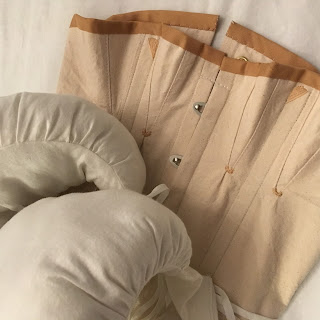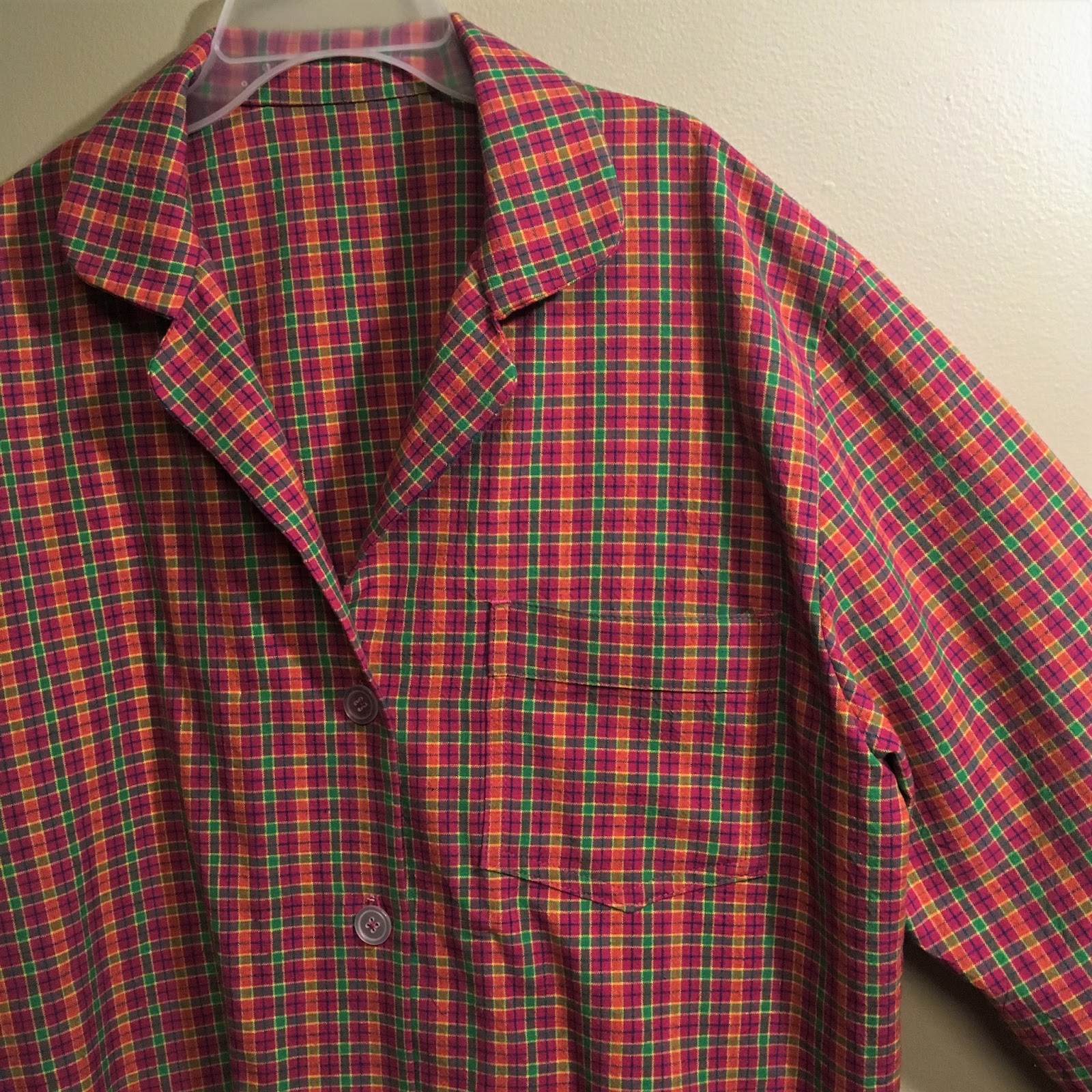Ask not whether you should mark your fabric, but rather, what you should mark your fabric with! Whether it be stitch lines, darts or dots, transferring those important pattern markings easily and accurately is key to efficient clothing construction.
In my costume technology class, the first project we're tackling is a corset. In this structural garment, there not only 16 boning channels to mark, but grommet placements and other notches to transfer. In fact, it would be just about impossible to construct this corset without the guiding lines. The question then becomes, how do I accurately transfer the markings from the paper pattern onto the coutil fabric?
 |
| Corset paper pattern with boning channels and markings to transfer. |
Luckily, there many tools, both made for the purpose or unintentionally discovered, that can be used to mark fabrics. In this blog post, I will be sharing my top sewing tips, tricks and tool picks for marking fabrics. Let's get started...
Fabric Marking Tools
Sewing Pins
Most people reach for pins to hold fabric together, however, they are also useful for indicating placement lines, notches, dots, and the like. Need to make an adjustment? Simply pull the temporary marker and re-pin.
Pros: Temporary, very easy to adjust, and does not leave a residue.
Cons: Temporary, may fall out, and sometimes has to be removed when stitching.
Thread Tacks or Basting
These temporary stitches may be done by hand or machine.
Pros: Much like pinning, thread tacks and basting stitches are temporary and safe for all fabrics. They leave minimal, if any markings once the stitches are removed, especially when done by hand, and can be seen from both sides of the fabric. Thread also comes in every color.
Cons: Takes time, and will show in seams if not entirely removed. For instance, if basting with red thread on a white garment, time and care must be taken to remove each piece of visible thread.
Tailor's Chalk
Tailor's chalk comes in both squares and triangles, as well as sticks, wheels or even in retractable pencil form.
Pros: Time honored tool. Marks most fabric surfaces, brushes away easily, rarely discolors fabric. I like to use chalk on wool and silk.
Cons: Temporary, and may brush away too easily. Unless sharped constantly, the lines may be thick and not as accurate. Chalk breaks easily, and is only available in certain colors.
Dressmaker's Carbon Paper
 |
| (Image source: Sewing Supplies: Dritz Sew 101) |
According to the Dritz company article, "Sewing Supplies: Dritz Sew 101" -
"These tools are used for transferring pattern markings to fabric. To get started, sandwich the tracing paper between your fabric and pattern. Trace along pattern markings using the tracing wheel and the markings will be transferred to your fabric."
Dressmaker's carbon paper must be used with a tracing wheel. These pigmented sheets, most often available in white, black, red, yellow or blue, have a waxy surface that leaves a faint, colored line with pressure, as explained in the excerpt above.
Pros: Great for transferring markings from paper patterns to fabric. These are the only tool (besides using a powerful light box) that I can think of that allows the user to simply and accurately trace from on top of a paper pattern.
Cons: Tracing wheels may be difficult to use, especially on curves, and may lack the control of pencils or pens. Enough pressure has to be applied, or the colored, dotted lines will not show. The waxy residue may not always rub out or wash away.
Pencils, Ink Pens and Markers
Pencils, ink pens and markers intended for paper may also be used to mark fabric. However, these markings, especially from ink pens or markers, are usually permanent, and best for mock ups or for use in places that will not be seen.
Pros: Convenience (I am guilty of often reaching for mechanical pencils, which allow for very fine markings, rather than other instruments perhaps more suited for fabric...) and familiarity with handling.
Cons: Markings are usually permanent, and markers like sharpies tend to bleed into the fabric.
Fabric Marking Pencils
There are pencils and pens made specifically for marking fabric. These include popular water soluble or disappearing ink options like Mark-B-Gone. I, personally, like the blue (or white) water soluble pencils.
Pros: These handle much like their paper counterparts offering precise lines and dots. The water soluble pencil markings are removable with a damp cloth.
Cons: They may leave permanent markings or stain fabrics. Disappearing ink pens tend to dry out and have to be replaced, while water soluble pencils need to be sharped constantly. Limited color selection.
FriXion Erasable Pens
Though intended for use on paper, these erasable pens are basically magic! Okay, maybe not magic, but a product of some pretty cool thermo-technology which allows the ink to disappear with friction (heat). Use an iron to erase the markings, and your freezer to make the lines reappear. I love my FriXion pens!
Pros: These pens are made in a variety of colors, and write on both paper and fabric. The ink disappears when ironed over, which makes it perfect for marking complicated designs or corset boning channels!
Cons: The ink may not completely disappear, and markings may be visible, even after applying heat.
Crayola's Ultra-Clean Washable Markers
Much like the FriXion pen hack, these are another one of my favorite sewing secrets. Intended for children who often color surfaces other than paper, these washable markers are often more "washable" than the water soluble fabric pens or pencils. They're also way less expensive. I believe I paid around two dollars for the pack of ten colors, and the fine tips provide very thin and accurate stitch lines.
Pros: Low cost, water soluble option that is often visible from both sides of the fabric. Can also double as paper makers.
Cons: Markings may not always wash away, and could bleed or discolor the fabric.
And that concludes this list of fabric marking tool options! Whenever using a marking instrument, it is always recommended important to test it on a scrap, before applying it to the final fabric.
Do you have a favorite fabric marking tool or tip? Share it below!
























































